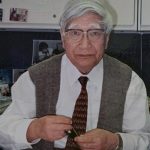I would like to tell you a story. Two, actually.
I am just returning from the 19th International Vasculitis and ANCA Workshop, which is always a fascinating meeting. In its inception, it was a workshop, in the true sense of the word. Now, we discuss anti-neutrophil cytoplasmic antibody (ANCA) testing as casually as we discuss obtaining a complete blood count. Then, ANCA testing was much less straightforward—we knew ANCA could be directed against several neutrophil cytoplasmic antigens, including proteinase-3, but who to test and how they should be tested were much less clear. The first ANCA workshop, held in Copenhagen in January 1988, included 34 participants.1 The latest workshop was attended by more than 500 participants.2
This growth reflects the growing importance of ANCA to my world, and how much the ANCA-associated vasculitides have taught us about how to approach other patients with other forms of vasculitis. This is the one meeting I attend that is not populated only by rheumatologists; sitting next to you may be a nephrologist, a pulmonologist, an immunologist or an internist, all of whom have an interest in these diseases. It really is a model for how all of our diseases should be approached.
If I’ve piqued your interest, the next workshop will be held two years from now. In Ireland. I’d love to see all of you there, but I imagine many of you will be otherwise engaged.
At this particular meeting, Rae Yeung, MD, PhD, FRCPC, professor of pediatrics, immunology and medical science at the University of Toronto, told a tale of discovery that I want to share with you today.3 The story emphasizes the importance of thinking big. But it made me recall a second story, which I heard at the 18th International Vasculitis and ANCA Workshop, about the importance of thinking small.
Thinking Small
Kawasaki’s disease was not a slam dunk.
I was a little surprised to learn that. Having grown up in the medical system when I did, I just assumed the concept of Kawasaki’s disease was immediately recognized as a truth, fully formed, like the goddess Athena emerging from the head of Zeus.
Apparently, its origins were somewhat less godlike.
Tomisaku Kawasaki was a staff pediatrician at the Red Cross Hospital outside of Tokyo when he saw his first patient with the disease that would eventually bear his name.4 Of course, he didn’t know that at the time. What he did know was that he was asked to examine a 4-year-old boy who presented with a fever, congestion of the mucous membranes, cervical lymphadenopathy, and desquamation. The patient eventually improved on his own, and was discharged, with the honest label of “diagnosis unknown.”
It was not until he saw his second patient, a year later, that he realized that he might be on to something. He put together a case series of seven patients, which he presented at a meeting of the Japanese Pediatric Association, and subsequently submitted the case series for publication.
It was rejected.
The reviewers noted the patients he described were much more likely to have an atypical form of Stevens-Johnson’s syndrome, and not a new disease entity.
Kawasaki then did what I hope most of us would have done in the same situation: He collected an additional 43 cases, which he then published as an even larger case series.5
There is a quotation, variously and apocryphally attributed to James Baldwin, George Bernard Shaw and Confucius, that says, “Those who say it cannot be done should not interrupt those who are doing it.” I like to think that whoever first said that was thinking of Kawasaki at the time.6
The morbidity of Kawasaki’s disease was not clear until four years later, when Noboru Tanaka, the head of pathology at the same Red Cross Hospital, performed an autopsy on a child who had died after having been diagnosed with Kawasaki’s disease. Up until that point, Kawasaki’s disease was considered a self-limiting diagnosis with a benign course. Dr. Tanaka’s autopsy demonstrated the child had died of a coronary artery thrombosis, establishing for the first time a connection between this mucocutaneous febrile illness and its pathomneumonic vascular finding.
This observation, too, was rejected.
Most clinicians at the time thought the connection between Kawasaki’s disease and coronary artery pathology was coincidental, not causal. It was not until a decade later that clinicians started to accept cardiovascular involvement as a hallmark of this disease.5
Since these initial reports, Kawasaki’s disease has come to be recognized as a worldwide phenomenon, affecting children in most racial and ethnic groups. It is now recognized as an independent syndrome, and the leading cause of acquired heart disease among children in the U.S. and Japan.7


